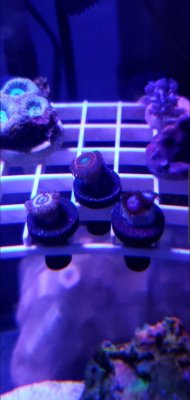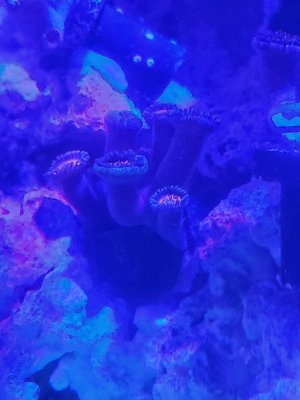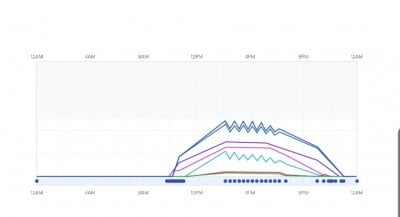- Joined
- Apr 19, 2019
- Messages
- 2,552
- Reaction score
- 2,079
I have these gobstopper zoas and after a few months of growth I notice their stalks are rather long. Is this a sign of too little light or is this normal as zoas grow? They've also been closed for a couple weeks due to dino irritating it. Heres before and after. (They are mostly closed right now cause it's close to bed time haha)






















